Beryl Cook and Tom of Finland embrace excess

Lady of Marseille, 1990, courtesy of the Beryl Cook Estate © John Cook
They're not two artists you'd immediately pair together. But a new exhibition is showcasing perviously unearthed similarities between Beryl Cook and Tom of Finland – namely, big bums and an affinity with queer culture.
Culture
Words: Joe Bobowicz
When South London gallery Studio Voltaire announced it would be pairing Britain’s lauded-and-loathed painter Beryl Cook with Finnish leather icon Tom of Finland, the art world screwed its face in bemusement.
Their main point of contention? The fact that Tom (born Touko Laaksonen) was an erotic artist infamous for his buffed-up, proto-Daddy depictions, while Cook was a painter who documented the visual precursor to hun culture, seaside frolics and hen parties. Hardly kindred spirits.
But scratch beneath the canvas and you’ll soon see they were both creative underdogs, using self-taught skills to chart the kind of “low culture” that blue-chip gallery gatekeepers wouldn’t dare touch. Drawing jackbooted fantasies from wartime memories or photographs of lovers in the ‘50s, Tom risked jail time for criminal obscenity. Meanwhile, Cook was painting the working communities of Plymouth and Brits abroad, honing in on sex workers, sausage-bap caffs and proudly voluptuous, beer-guzzling girls.
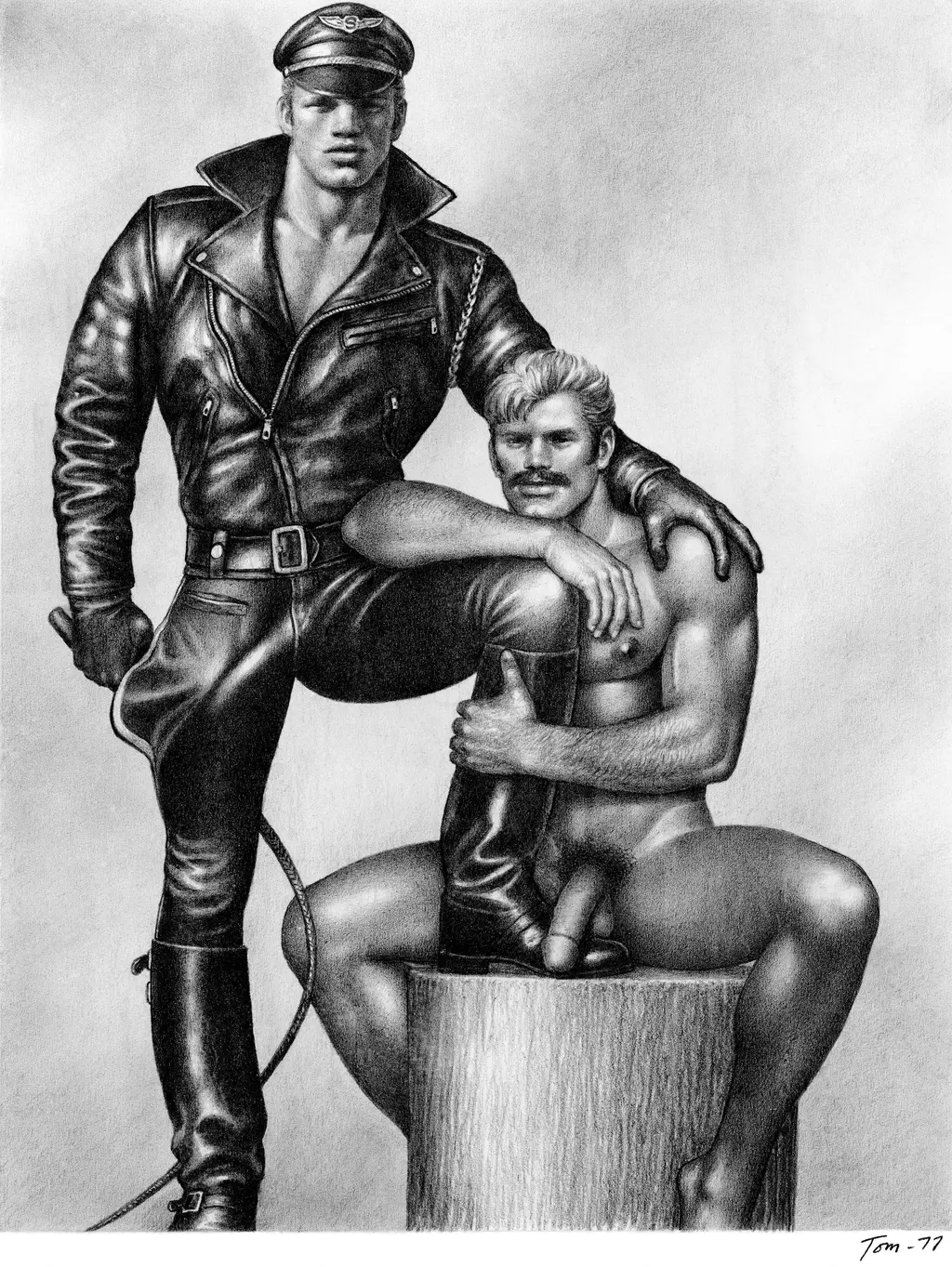
Tom of Finland, Untitled, 1977, from the Eons calendar series © Tom of Finland Foundation
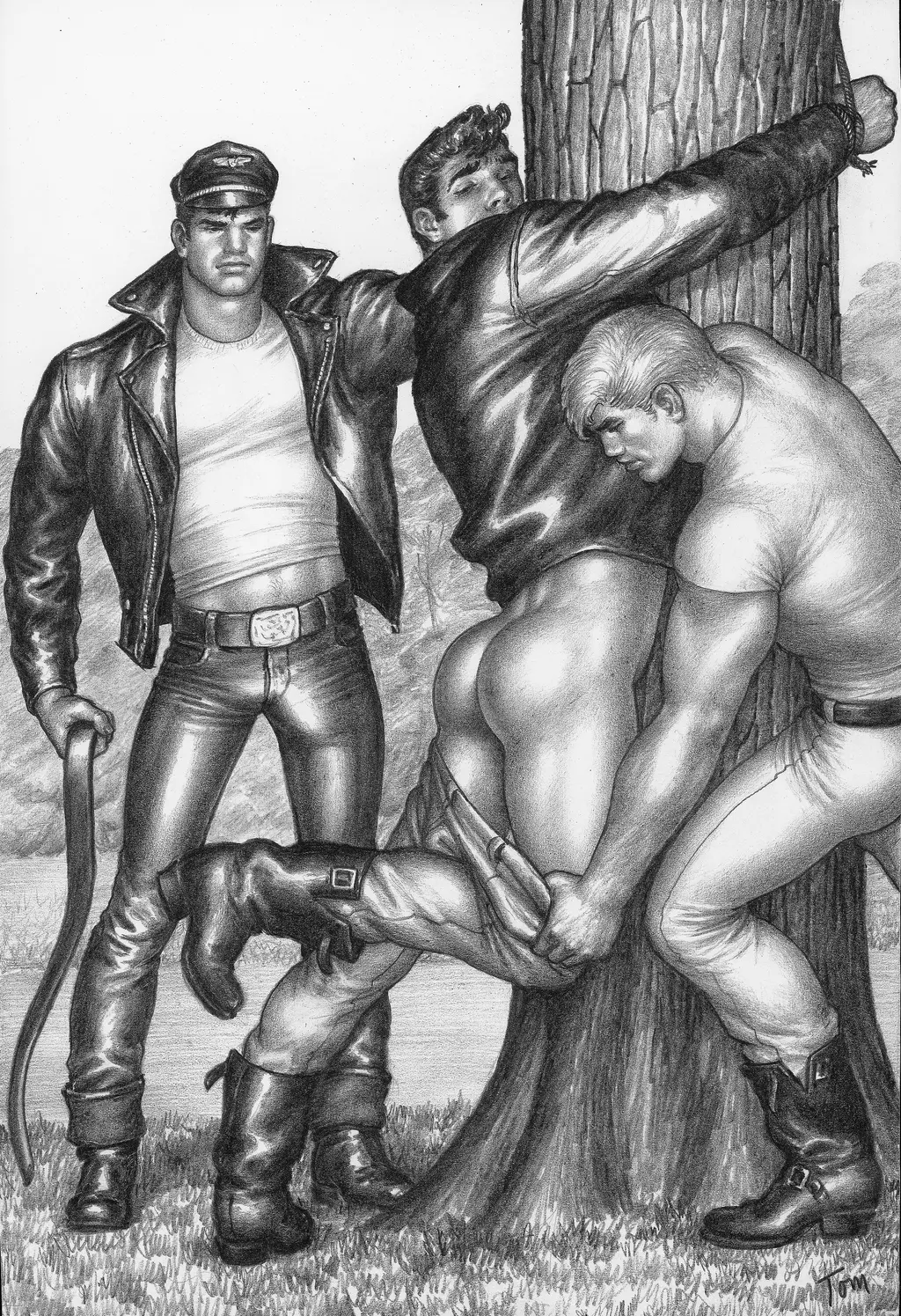
Tom of Finland, Untitled, 1964, from the Athletic Model Guild Motorcycle Thief series © 1964 Tom of Finland Foundation
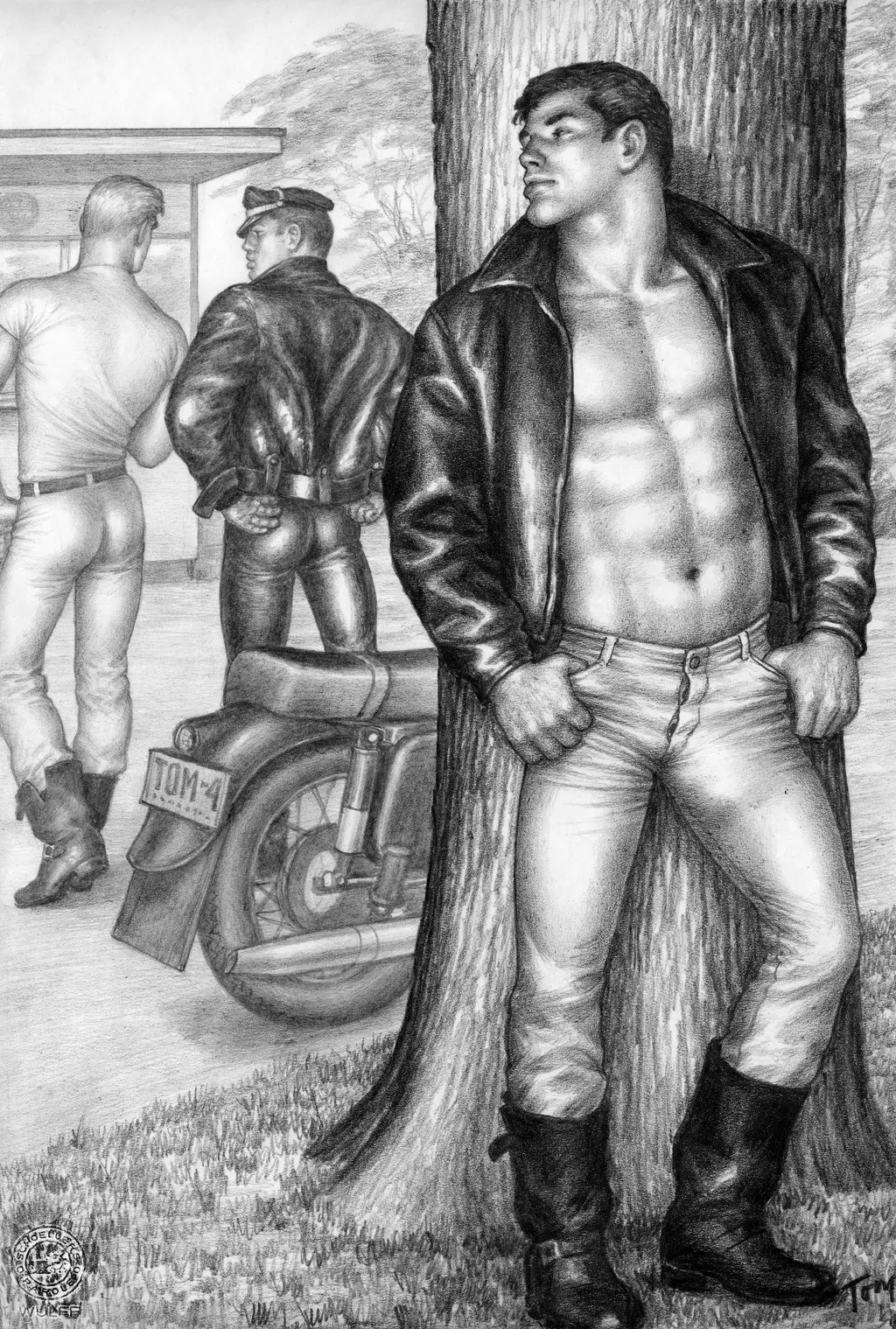
Tom of Finland, Untitled, 1964, from the Athletic Model Guild Motorcycle Thief series © Tom of Finland Foundation
“In Tom’s earlier decades of his career, he had an intended audience – young developing homosexual males, [and aimed] to provide them with some positive role modelling,” says Durk Dehner, co-founder of the Tom of Finland Foundation, noting the lack of proud, gay male visibility in post-war war culture. “With Beryl’s work, she too enjoyed the jolliness of the physical being and the appreciation of having a sexual nature and indulging in one’s physical self.”
Visually, this is immediately apparent – much like Tom, Cook caricatured her subjects with bulging buttocks and breasts. But she was also deeply involved in a nascent queer culture. Where Tom helped define and hone the gay, macho archetype, Cook was busy documenting the UK’s underground gay bars during the whispered days before decriminalisation. Plymouth’s fabled Lockyer Tavern, home to a secret “back bar”, is a perennial setting in Cook’s works, often lined with effete, gesturing dandies posed before a smiling landlady.
“I knew a number of my grandmother’s friends were gay when I was growing up,” Cook’s granddaughter Sophie Howe says. “After talking with my parents, we realised that she had far more friends in the queer community than we first thought. She even painted a leather bar!”
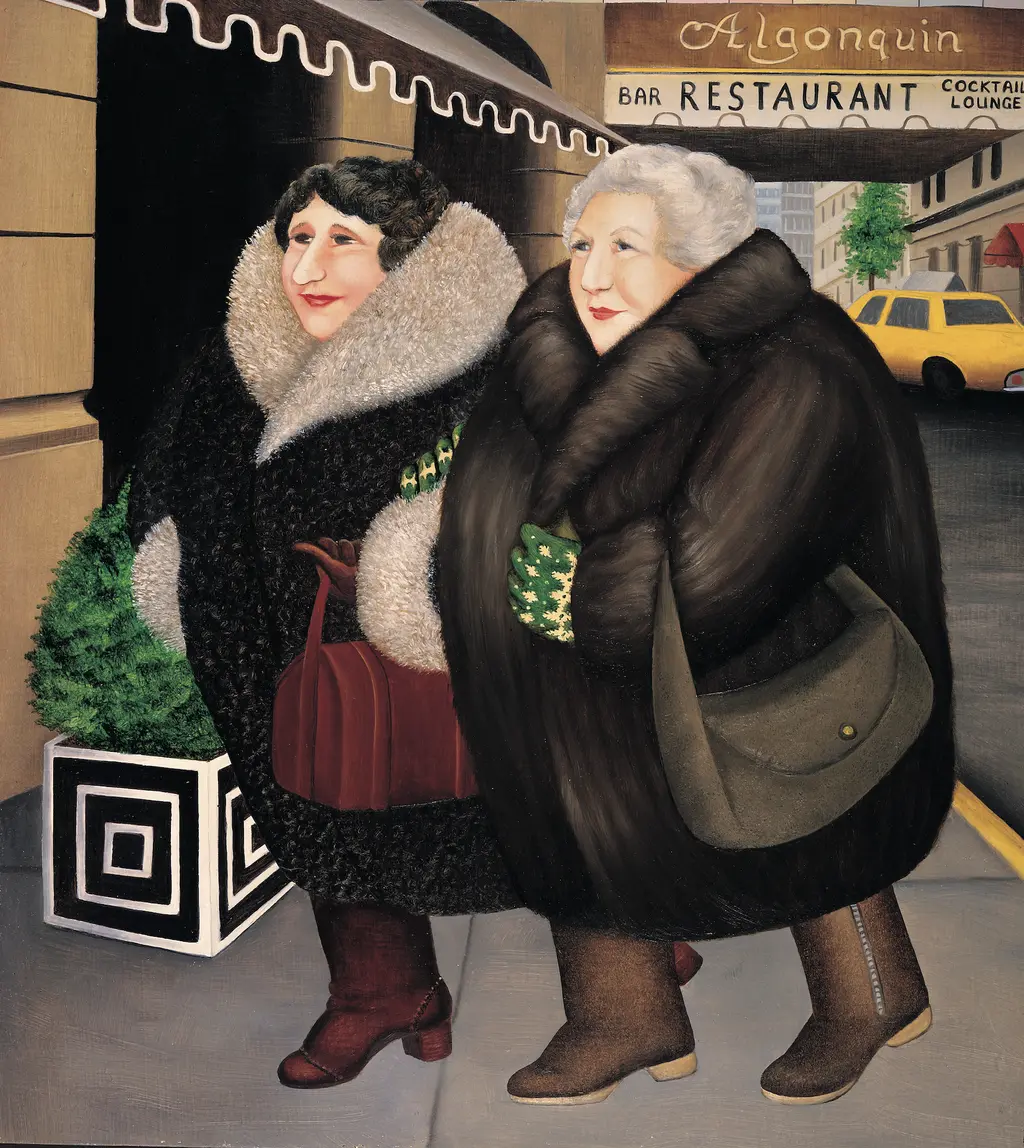
Beryl Cook, Bar and Barbara, 1984, courtesy of the Beryl Cook Estate © John Cook 2023
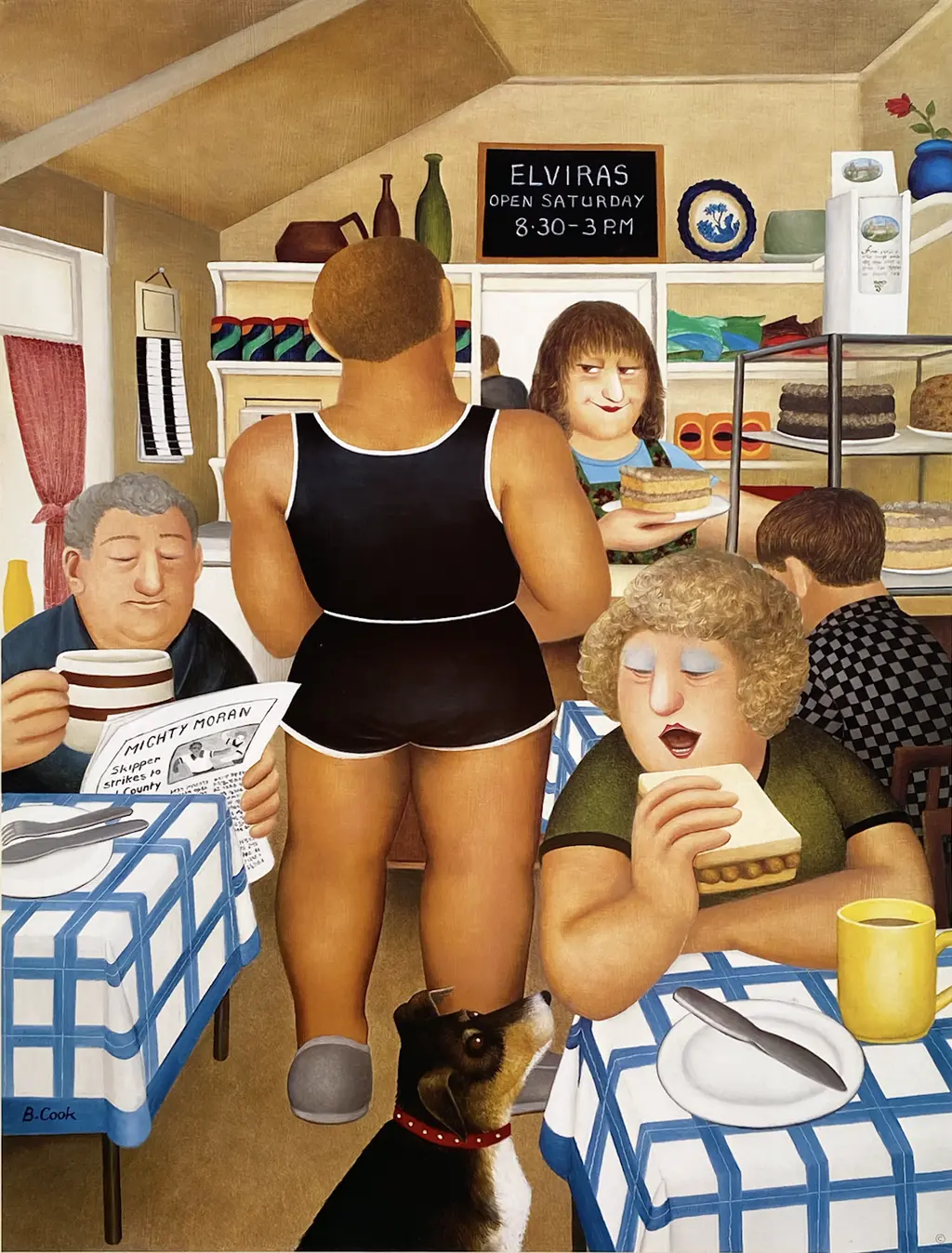
Beryl Cook, Elviras Cafe, 1997, courtesy of the Beryl Cook Estate © John Cook 2023
There’s also a parallel to be drawn between the artists’ delayed rise to institutional acclaim. In Tom’s case, this was partly down to his brazen homosexuality. Although he had a major breakthrough when his work featured on the cover of a 1957 issue of Physique Pictorial – the original American beefcake magazine advertised as a bodybuilding title to skirt censorship laws – Tom soon became boxed into the “gay interest” category. As a consequence, for a large part of his life, he wasn’t recognised as a true artist.
“Tom’s work has always commanded a large fan base, but perhaps inevitably the content meant it was, for a long time, largely seen as pornography,” says Joe Scotland, director of Studio Voltaire. Likewise, Cook was often dismissed as a folk artist, reducing her to a Sunday painter whose works could be found on novelty calendars and mugs.
Nonetheless, people are often surprised to learn that, in 1976, Cook had a solo exhibition at the esteemed Whitechapel Gallery, known for fostering the talents of Barbara Hepworth and Gilbert & George. “People saw themselves represented, or recognised something true to life in the humorous, often working-class subjects she painted,” Scotland says. “Her very popularity may have been a factor in how she was undervalued.”
While Tom and Cook’s art is now increasingly shown in solo shows, there have only been a handful of group or two-person exhibitions engaging their work. And they’ve certainly never been shown in the same room. Scotland, then, took a chance in placing together two singular artists from what are, ostensibly, two vastly different fan and collector bases. Even Howe didn’t immediately see the link. “We approached both parties simultaneously. Neither knew of the other artist’s work,” Scotland admits. But his decision to team them up pays off, recontextualising the two artists’ worlds in a very different world to the time of creation.
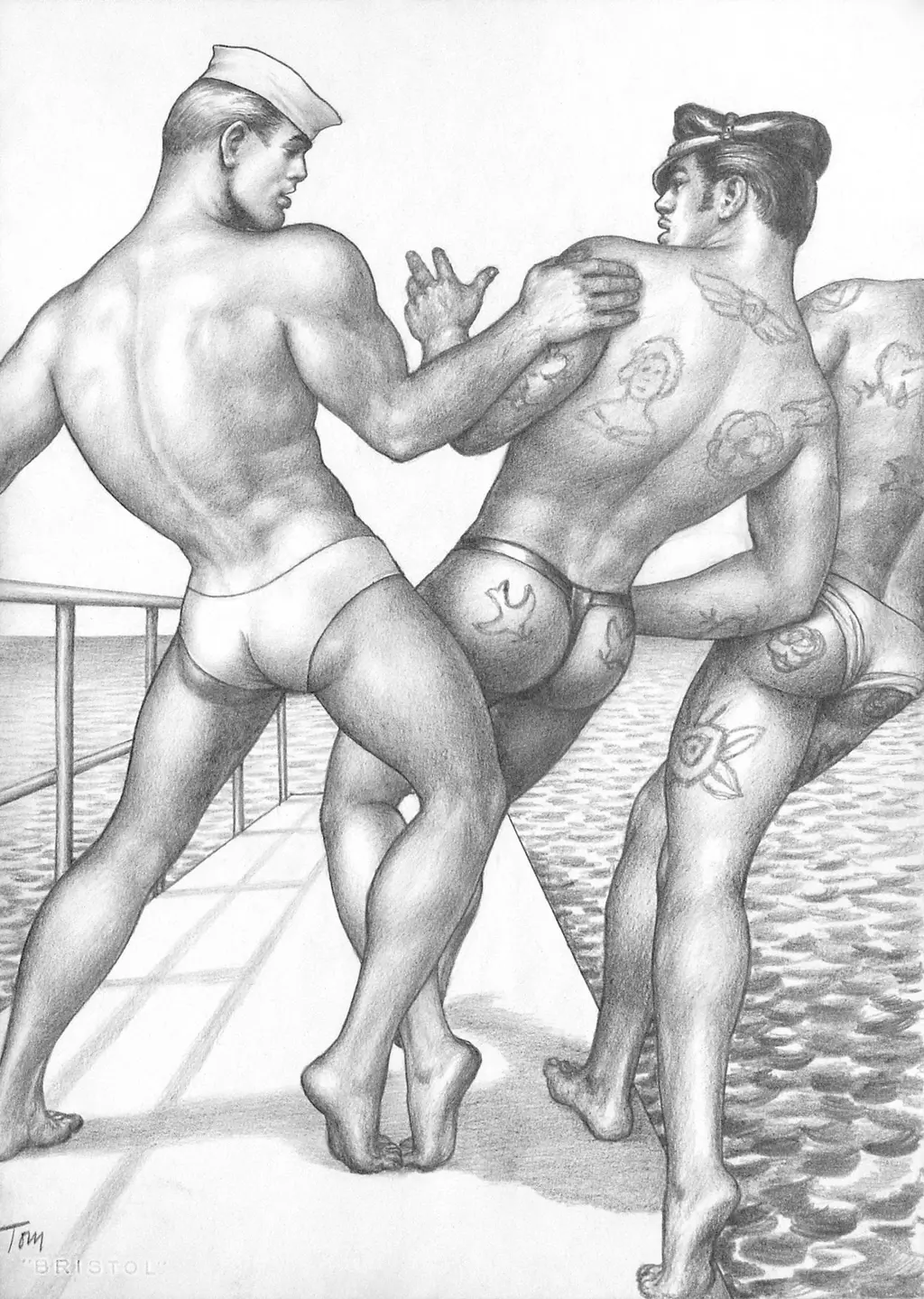
Tom of Finland, Untitled, 1962, from the Athletic Model Guild The Tattooed Sailor series ©Tom of Finland Foundation
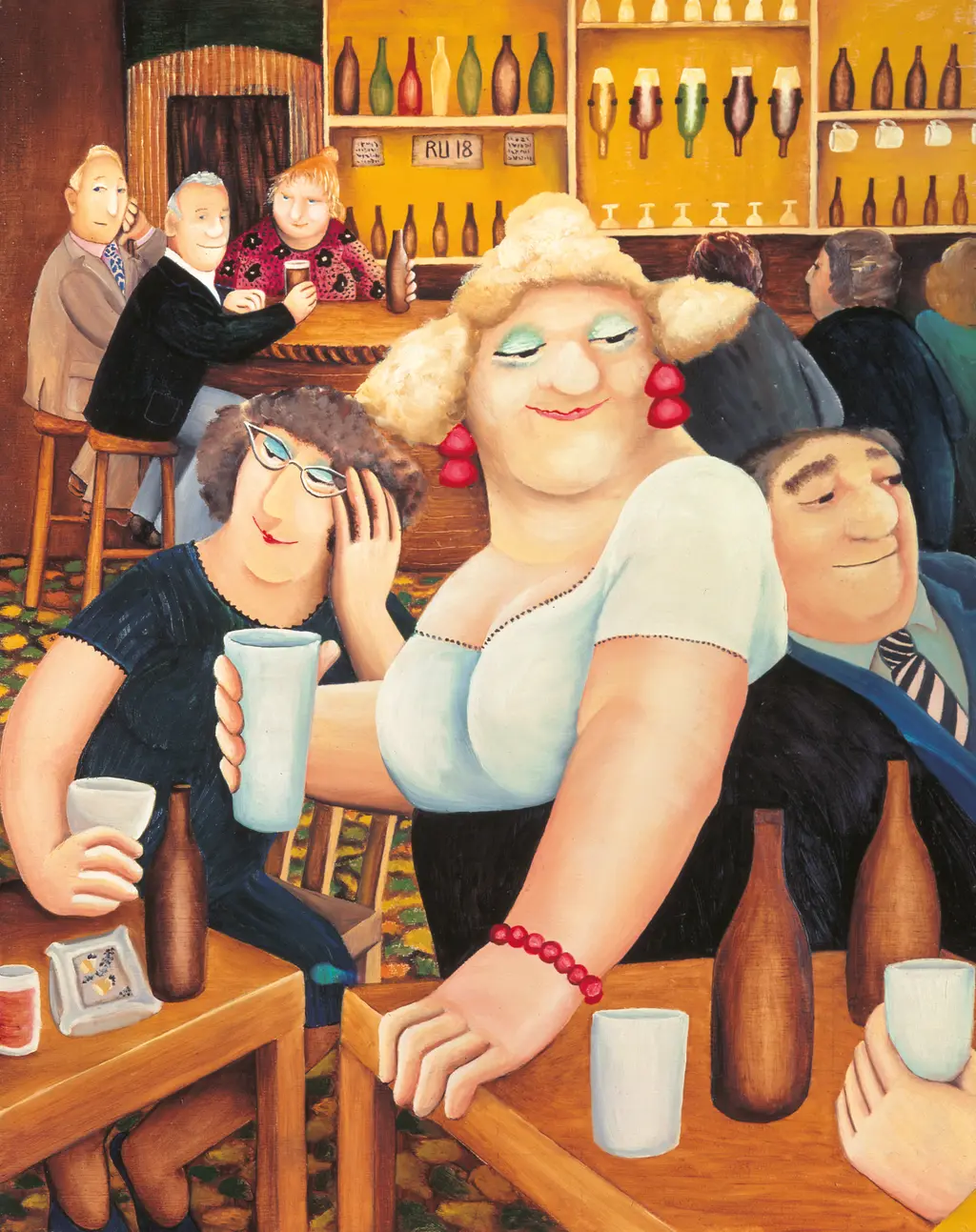
Beryl Cook, The Lockyer Tavern, 1974, courtesy of the Beryl Cook Estate
Let’s not forget, for example, the ways in which words such as “queer” have evolved. It’s no secret that Tom’s imagery spoke, first and foremost, to a hyper-masculine rendition of homosexuality, and less so the sissies we now proudly celebrate alongside muscle Marys. That’s not to say that the tougher, buffer versions of gay life don’t remain just as empowering and valid as they were when first presented by Tom. But we can’t ignore the welcome visibility of softer forms, much like those embodied by the pink-shirted pansies Cook befriended.
After all, these days, there’s a multiplicity of identities that make up the queer community. Far more so than in the ‘70s, when Cook and Tom were prolific. Now, where one sits on the masc-to-femme continuum is up for grabs – hopping and changing. As a result, the people engaging with Tom’s work are no longer just the Perfecto-clad gays that had written him fan mail, but each and every character in the LGBTQ+ acronym.
“We still get letters every so often,” says Dehner. “Many times, it’s verbally addressed by freely liberated women and lesbians who see beyond the [drawing’s] gender. Transgender men and women, drag kings, young 21-year-old pups to full on leather men use Tom’s men as a way of describing what they desire to be.”
Similarly, the kind of fun-loving ladies depicted by Cook are modern-day facsimiles of the everyday divas gay men describe in Instagram comments as “Mother”. But beyond these observations, perhaps the biggest throughline of Cook and Tom is their earnest and subversive embrace of excess. Cook’s work – too camp for the art critics and too fat for the moral puritans – and Tom’s work – pulsing with cocks, pecs and rotund behinds – will never win over the white-cube minimalists. But therein lies their power.
“Beryl used to, perhaps facetiously, say that she painted people larger to avoid having to deal with the backgrounds,” says Scotland. “Tom on the other hand was always forthright about his pleasure in exaggerating assets for his and his viewers enjoyment.”
Maybe the simple act of being too much is exactly what makes the duo click. And this show owns it.
Beryl Cook /Tom of Finland is showing from 15th May to 25th August at Studio Voltaire, 1A Nelsons Row, London SW4 7JR








